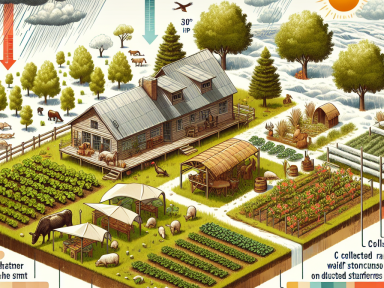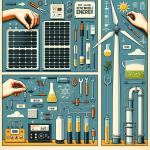Understanding the Impacts of Climate Change on Homesteading
Climate change is undeniably a global struggle, and as homesteaders, we are on the front line. Increasing temperatures, extreme weather events, and shifting wildlife populations significantly affect how we live and work on our homesteads. It is therefore essential that we understand these changes and adapt our self-reliant lifestyles accordingly.
Adapting Your Homestead to Rising Temperatures
Higher temperatures can lead to more intense droughts and heatwaves. These conditions pose risks to our crops, livestock, and overall water availability. Here are some practical strategies to adopt:
- Plant heat-tolerant crops: Switch to planting varieties that can withstand high temperatures and require less water.
- Establish shade structures: Use trees, crops and built structures to provide shade for livestock and low-tolerant crops. This can also help conserve water in your soil.
- Improve water storage: Invest in better rainwater harvesting equipment and consider digging a well or pond to increase your water reserves.
Preparing for Increased Extreme Weather Events
Climate change is expected to result in not just warmer temperatures, but also more frequent and severe weather extremes like hurricanes, floods, and blizzards. Here’s how we can prepare:
- Strengthen your infrastructure: Build storm-resistant shelters for your livestock and secure loose equipment that could become projective in high winds.
- Adopt natural flood mitigation techniques: These include creating swales and berms, to control water flow and prevent soil erosion.
- Develop a plan for winter weather: Have ample supplies, such as feed for livestock and firewood for heating, in case you get snowed in for an extended period.
Shifting Wildlife Populations and Disease
Climate change has shown to disrupt the habitats of many wildlife and insects, potentially bringing new threats closer to your homestead:
- Positively interact with wildlife: Encourage beneficial wildlife, such as pollinators and natural pest predators, by providing habitats and other attractiveness.
- Prevent wildlife conflicts: Secure your food and water sources and livestock against potential predator invasions.
- Monitor for pests and disease: Keep a keen eye on your garden and livestock for signs of diseases, especially those that could be facilitated by warmer temperatures.
Closing Thoughts
The effects of climate change on our homesteads are sobering. As we continue to experience changing weather patterns, rising temperatures, and shifting wildlife populations, the importance of adapting and preparing our homesteads becomes more apparent. The good news is, with careful planning and adaptability, we are fully capable of making these adjustments and sustaining our self-reliant lifestyles. Remember, while we may not be able to halt climate change individually, we can mitigate its impacts, starting right from our homesteads.




GIPHY App Key not set. Please check settings